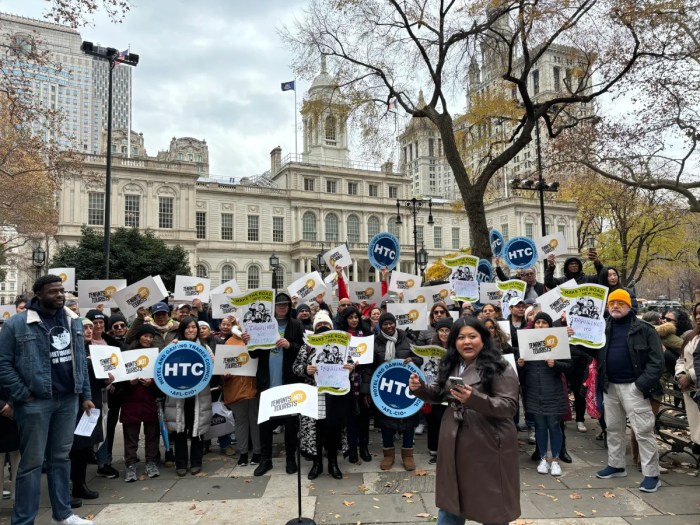By Alex Robinson
A coalition of developers, businesses and environmentalists have launched a bid to clean up Flushing Creek.
More than 800 million gallons of raw sewage flows into the finger-shaped body of water, which separates Willets Point from Flushing, every year, according to researchers.
Sludge seeps into the creek from combined sewage overflows anytime there is even minimal rainfall because the city’s sewer system cannot handle the extra water.
“Our whole mission is to promote projects that clean up the creek and we want to return it to community use,” said Alexandra Rosa, a consultant who presented the group’s plan to Community Board 7 Monday night.
The group, Friends of Flushing Creek, is composed of a number of developers and businesses, some of which own land adjacent to the creek.
Representatives from Skyview Park, Crystal Window and Door Systems and developers F&T Group are stakeholders in the group and sit on the organization’s board of directors.
“We need a creek people will want to come to that meets water standards,” Rosa said. “We are all about restoring the creek so it can be used by the community.”
Rosa said the group’s initiative complements an effort by Claire Shulman’s Flushing Willets Point Corona Local Development Corp. to redevelop a 60-acre waterfront property bordered by Flushing Creek, Prince Street, Roosevelt Avenue and Northern Boulevard.
Shulman’s LDC was awarded a $1.5 million Brownfield grant by the state in 2011 to explore the possible development.
Rosa, Shulman’s former chief of staff, stressed in an interview that Friends of Flushing Creek is operating separately from the former borough president’s effort, but added some of the same stakeholders in the LDC are also involved with the group.
F&T Group, also belongs to Shulman’s LDC, has developed at least seven buildings in downtown Flushing and is on the cusp of breaking ground on the first phase of its $850 million Flushing Commons development.
Other members of the group include developers Briarwood Organization, Asian Americans for Equality, Assi Plaza and the Richmond Hill Business Persons Corp. The most recent addition to the group’s advisory board is James Cervino, the chairman of CB 7’s environmental committee, a professor in marine pollution at the Woods Hole Oceanography Institute in Massachusetts, and president of the Coastal Preservation Network, a nonprofit that advocates for the restoration of the waterfront.
Former wetlands around the creek, which once absorbed a significant amount of rainwater, have been developed over the years into neighborhoods, parks and stadiums. The water that normally would have been absorbed by these lands streams into the city’s combined sewer system instead of being discharged into waterways.
Nearly 72 percent of the city’s ground does not absorb water, according to city Department of Enviornmental Protection.
The city built a combined sewer overflow tank, which can hold 43 million gallons of sewage, in Flushing Meadows Corona Park in 2007 to try to alleviate the problem, but this does not tackle the root of the overflows, said environmental planner Eymund Diegel who conducts research on the area’s overflow dilemma.
“Solutions will have to focus on targeting the cause of the sewer overflows,” he said in an e-mail.
More needs to be done to divert natural streams of water that flow from paved over lands into the sewer system, Diegel said.
DEP has said it will start working on what it called a Long-Term Control Plan to study the impacts of combined sewer overflows on the creek’s water quality.
The agency was set to discuss the plan Wednesday night at a meeting at John Bowne High School. Friends of Flushing Creek invited board members to attend the discussion.
Rosa said Friends of Flushing Creek is going to push the city to dredge the creek and build infrastructure to stop the overflow of sewage into the water.
DEP has plans to dredge 16.8 acres of the larger Flushing Bay, but has yet to commit to doing the same for the creek, Rosa said.
The group also hopes to push DEP to build more green infrastructure, such as curbside bioswales, to absorb more water.
“We’ve got to get New York City to up its ante,” Rosa said.
Reach reporter Alex Robinson by e-mail at arobinson@cnglocal.com or by phone at 718-260-4566.




































